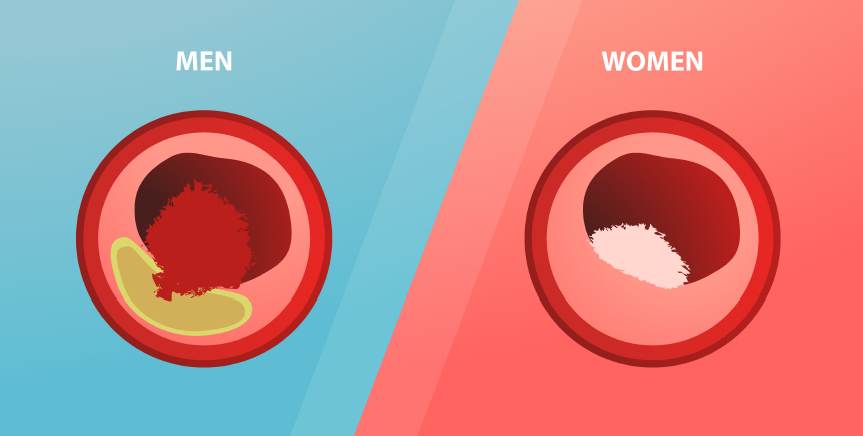



+8

Daniek Kapteijn

Ernest Diez Benavente

Tim Sakkers

Michal Mokry

Hester den Ruijter
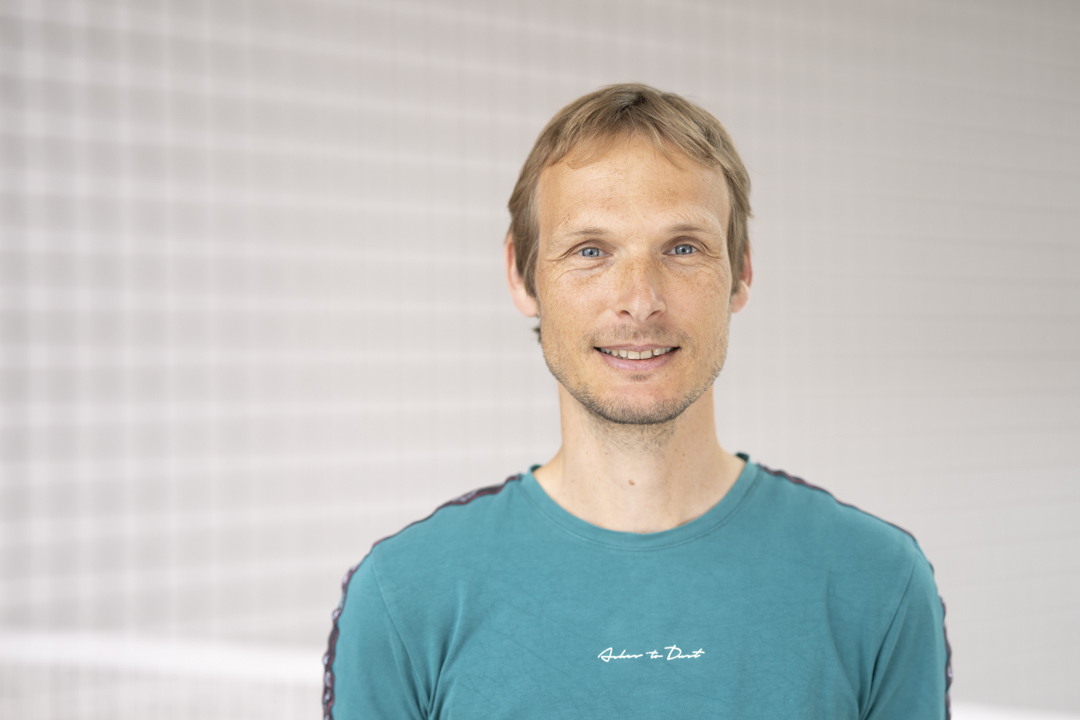
Mark Daniels
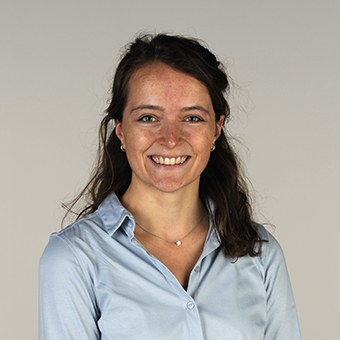
Sophie de Ruiter

Marian Wesseling

Anna Spiering

Tian Lan

Eloi Mili
Cardiovascular disease causes 51% of deaths in women and 42% of deaths in men in Europe. Women account for a greater proportion of increased hospitalizations for coronary artery disease at younger ages. Missed and delayed diagnoses are more common in women than men, likely due to sex differences in CAD pathophysiology. Men often experience atherosclerotic plaque rupture as the underlying mechanism for myocardial infarction, whereas women more often suffer from plaque erosion. Knowledge about the mechanisms that explain the sex differences in CAD and plaque erosion is lacking. This is due, in part, to the underrepresentation of women in clinical trials for CAD and biobank studies.
We have made substantial progress in elucidating sex-specific mechanisms driving atherogenesis and identified important sex differences in gene regulation of atherosclerosis. We currently study how sex itself affects atherosclerosis on a molecular level and predisposes females to symptomatic fibrous plaques. We aim to identify target genes that prevent the development of symptomatic eroded fibrous lesions. This is a challenging but necessary step to close the knowledge gap on atherosclerosis in women and promote health equity between women and men with coronary artery disease.
European Research Council (ERC),
Leducq Foundation,
Heart to Handle,
Atlantic Dutchesses,
Vrienden UMC Utrecht,



Daniek Kapteijn

Ernest Diez Benavente

Tim Sakkers

Michal Mokry

Hester den Ruijter

Mark Daniels

Sophie de Ruiter

Marian Wesseling

Anna Spiering

Tian Lan

Eloi Mili
Cardiovascular disease causes 51% of deaths in women and 42% of deaths in men in Europe. Women account for a greater proportion of increased hospitalizations for coronary artery disease at younger ages. Missed and delayed diagnoses are more common in women than men, likely due to sex differences in CAD pathophysiology. Men often experience atherosclerotic plaque rupture as the underlying mechanism for myocardial infarction, whereas women more often suffer from plaque erosion. Knowledge about the mechanisms that explain the sex differences in CAD and plaque erosion is lacking. This is due, in part, to the underrepresentation of women in clinical trials for CAD and biobank studies.
We have made substantial progress in elucidating sex-specific mechanisms driving atherogenesis and identified important sex differences in gene regulation of atherosclerosis. We currently study how sex itself affects atherosclerosis on a molecular level and predisposes females to symptomatic fibrous plaques. We aim to identify target genes that prevent the development of symptomatic eroded fibrous lesions. This is a challenging but necessary step to close the knowledge gap on atherosclerosis in women and promote health equity between women and men with coronary artery disease.
European Research Council (ERC),
Leducq Foundation,
Heart to Handle,
Atlantic Dutchesses,
Vrienden UMC Utrecht,




+6

Charlotte Onland-Moret

Hester den Ruijter

Diantha Schipaanboord

Elisa Dal Canto

Ernest Diez Benavente
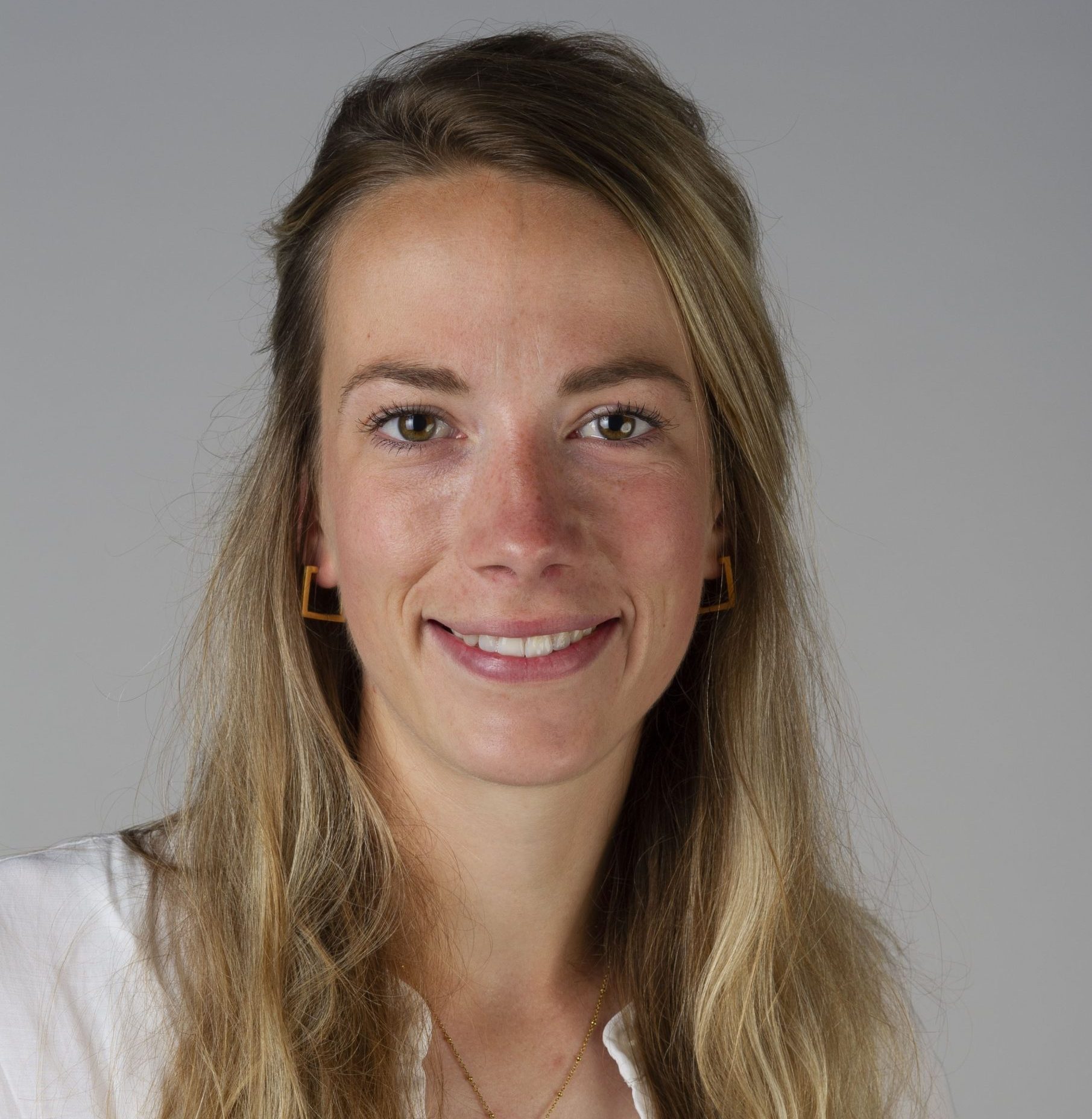
Anique Dobbe

Sophie de Ruiter

Elize de Jong
Kaiyong Qu
Non-obstructive coronary artery disease normally refers to a patient being send home and reassured. Yet, recent evidence shows that diseases of the small blood vessels of the heart or vasospasms can remain undetected in these patients, who are mostly female. Patients with such microvascular or vasospastic angina have an impaired quality of life and a poorer prognosis than patients without coronary artery disease. Follow-up data shows that especially the development of heart failure with preserved ejection fraction is common. We conduct research into women who have a diagnosis of non-obstructive CAD, yet remain symptomatic. We perform invasive catheterization to identify how many women (and men) have microvascular or vasospastic angina. To move towards non-invasive detection, we will test which different ECG methodologies and biomarkers to improve referral of patients to intervention cardiologists.
Hartstichting,
Etos,



Charlotte Onland-Moret

Hester den Ruijter

Diantha Schipaanboord

Elisa Dal Canto

Ernest Diez Benavente

Anique Dobbe

Sophie de Ruiter

Elize de Jong
Kaiyong Qu
Non-obstructive coronary artery disease normally refers to a patient being send home and reassured. Yet, recent evidence shows that diseases of the small blood vessels of the heart or vasospasms can remain undetected in these patients, who are mostly female. Patients with such microvascular or vasospastic angina have an impaired quality of life and a poorer prognosis than patients without coronary artery disease. Follow-up data shows that especially the development of heart failure with preserved ejection fraction is common. We conduct research into women who have a diagnosis of non-obstructive CAD, yet remain symptomatic. We perform invasive catheterization to identify how many women (and men) have microvascular or vasospastic angina. To move towards non-invasive detection, we will test which different ECG methodologies and biomarkers to improve referral of patients to intervention cardiologists.
Hartstichting,
Etos,
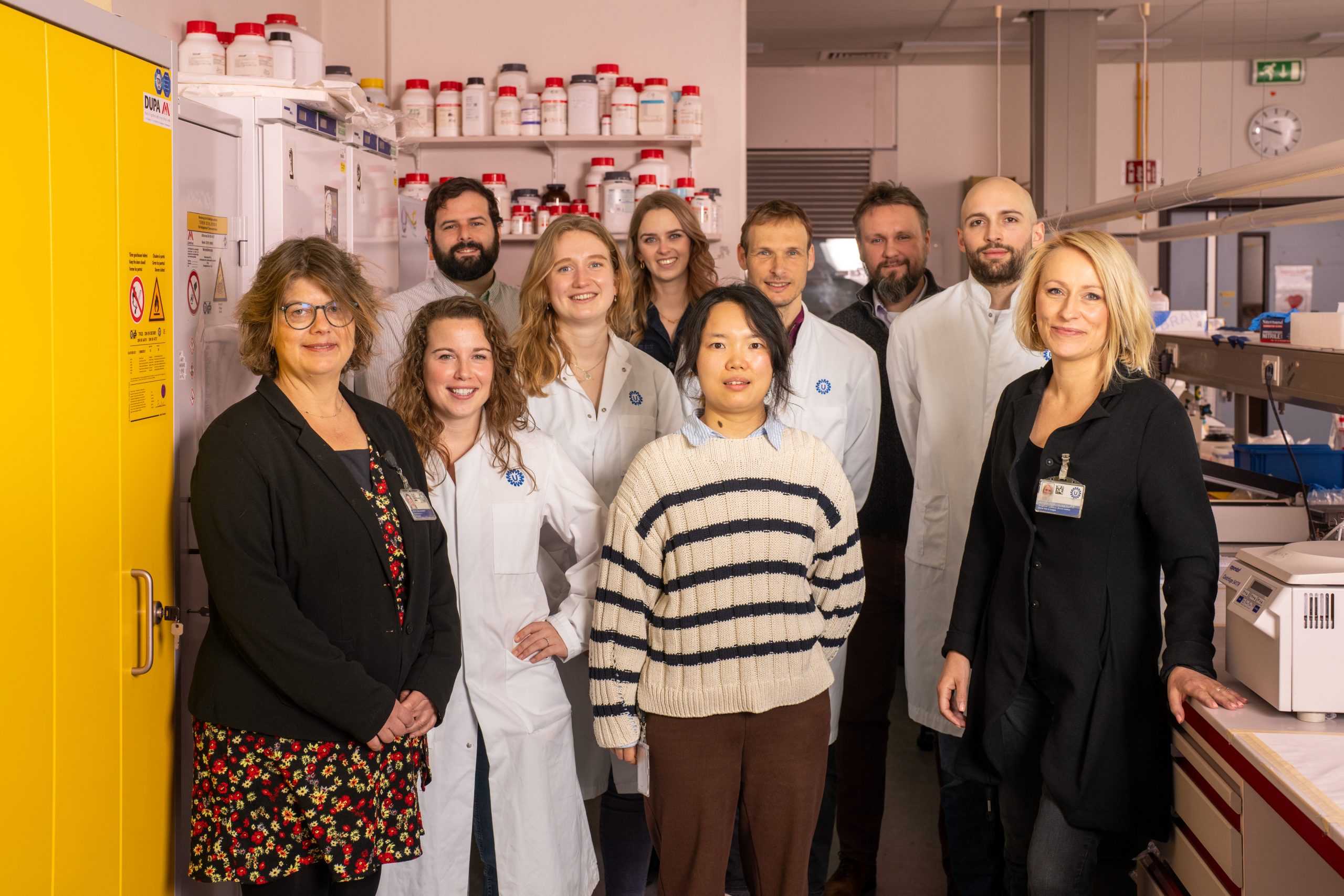


1. Who are you and what do you do?
Welcome to my page. Let me introduce myself, I am Hester den Ruijter, Professor of Cardiovascular disease in women. My aim is to translate knowledge from experimental research to the patient.
2. Problem to solution
In women, the diagnosis of heart disease is a problem. Most available diagnostics for heart disease have been tested in men and directly translated to women. Nowadays we are increasingly becoming aware that male-derived tests do not always detect heart disease in women. There are interesting sex differences in the pathophysiology of heart disease that may explain why diagnostic tests developed in men fail to detect heart disease in women. Therefore, my goal is to obtain novel biomarkers that facilitate the diagnosis of heart disease in women, and to understand why these sex differences occur.
3. My tasks in the group
I am in charge, together with the team, of deciding the direction of the group’s research and I organize and lead the different projects. I supervise the group’s PhD students and I am also involved on organizing and teaching at several courses within the University Utrecht as well as external courses.
4. Journal articles and other relevant output
den ruijter - Search Results - PubMed (nih.gov)


1. Who are you and what do you do?
Welcome to my page. Let me introduce myself, I am Hester den Ruijter, Professor of Cardiovascular disease in women. My aim is to translate knowledge from experimental research to the patient.
2. Problem to solution
In women, the diagnosis of heart disease is a problem. Most available diagnostics for heart disease have been tested in men and directly translated to women. Nowadays we are increasingly becoming aware that male-derived tests do not always detect heart disease in women. There are interesting sex differences in the pathophysiology of heart disease that may explain why diagnostic tests developed in men fail to detect heart disease in women. Therefore, my goal is to obtain novel biomarkers that facilitate the diagnosis of heart disease in women, and to understand why these sex differences occur.
3. My tasks in the group
I am in charge, together with the team, of deciding the direction of the group’s research and I organize and lead the different projects. I supervise the group’s PhD students and I am also involved on organizing and teaching at several courses within the University Utrecht as well as external courses.
4. Journal articles and other relevant output
den ruijter - Search Results - PubMed (nih.gov)




1. Who are you and what do you do?
Hi! And welcome to my page! I am Michal Mokry, I am a fundamental and translational researcher with a medical background. I use a combination of both wet-lab and computational biology to identify biological mechanisms that will ultimately guide personalized patient care decisions.
2. Problem to solution
Atherosclerosis is a progressive disease of the arteries and is the leading cause of death in humans. Drugs used to manage an atherosclerotic disease like statins or aspirin are widely applied. However, not all patients benefit equally. We have recently found that the molecular mechanisms that drive atherosclerosis differ between patients. It suggests that different patients might respond differently to existing or novel drugs. This opens great possibilities - including stratified clinical trials and personalized patient care decisions.
3. My tasks in the group
I supervise PhD students and I am involved in data analysis.
4. Journal articles and other relevant output
https://scholar.google.com/citations?user=rX7GiUAAAAAJ&hl=en

1. Who are you and what do you do?
Hi! And welcome to my page! I am Michal Mokry, I am a fundamental and translational researcher with a medical background. I use a combination of both wet-lab and computational biology to identify biological mechanisms that will ultimately guide personalized patient care decisions.
2. Problem to solution
Atherosclerosis is a progressive disease of the arteries and is the leading cause of death in humans. Drugs used to manage an atherosclerotic disease like statins or aspirin are widely applied. However, not all patients benefit equally. We have recently found that the molecular mechanisms that drive atherosclerosis differ between patients. It suggests that different patients might respond differently to existing or novel drugs. This opens great possibilities - including stratified clinical trials and personalized patient care decisions.
3. My tasks in the group
I supervise PhD students and I am involved in data analysis.
4. Journal articles and other relevant output
https://scholar.google.com/citations?user=rX7GiUAAAAAJ&hl=en



1. Who are you and what do you do?
Welcome to my page. Let me introduce myself, I am Charlotte Onland-Moret, Associate professor of Molecular Epidemiology. My research focusses on specific risk factors for females and my aim is to better understand female-specific cardiovascular disease.
2. Problem to solution
Female specific risk factors, like the age at which a woman experiences her first menstruation, pregnancy, complications during pregnancy, and the age at which a woman experiences menopause all influence her cardiovascular disease risk. But we do not know how this works. Female and male sex hormones, estrogen and testosterone, may be involved, but the evidence is conflicting. Understanding how these events in a woman’s life leads to cardiovascular disease helps in finding biomarkers for early detection of disease in women, but also in finding treatments that my help women. Therefore, my goal is to find the causal mechanisms that link these factors to the disease in women. Also, I aim to identify early biomarkers that facilitate the diagnosis of heart disease in women.
3. My tasks in the group
As an associate professor, I supervise the students, PhD students and early career scientists in the team. As an epidemiologist I help in the design, analysis and interpretation of the studies that are performed in the team.
4. Journal articles and other relevant output

1. Who are you and what do you do?
Welcome to my page. Let me introduce myself, I am Charlotte Onland-Moret, Associate professor of Molecular Epidemiology. My research focusses on specific risk factors for females and my aim is to better understand female-specific cardiovascular disease.
2. Problem to solution
Female specific risk factors, like the age at which a woman experiences her first menstruation, pregnancy, complications during pregnancy, and the age at which a woman experiences menopause all influence her cardiovascular disease risk. But we do not know how this works. Female and male sex hormones, estrogen and testosterone, may be involved, but the evidence is conflicting. Understanding how these events in a woman’s life leads to cardiovascular disease helps in finding biomarkers for early detection of disease in women, but also in finding treatments that my help women. Therefore, my goal is to find the causal mechanisms that link these factors to the disease in women. Also, I aim to identify early biomarkers that facilitate the diagnosis of heart disease in women.
3. My tasks in the group
As an associate professor, I supervise the students, PhD students and early career scientists in the team. As an epidemiologist I help in the design, analysis and interpretation of the studies that are performed in the team.
4. Journal articles and other relevant output



1. Who are you and what do you do?
Welcome to my page. Let me introduce myself, I am Ernest Diez Benavente, a postdoctoral researcher at the Department of Experimental Cardiology in the UMCU. My research focuses on the use of large ‘omics biological data in order to understand the mechanisms of sex-differences in cardiovascular diseases. Furthermore, I sit at the intersection of the lab-based research and data-driven analysis, combining these two fields I aim to identify new targets and biomarkers to be used for early detection and prevention of cardiovascular diseases in women.
2. Problem to solution
Understanding the biological mechanisms that lead to different cardiovascular diseases is the first step in the path to unravel new avenues for improving detection and prevention of these diseases. There are widely reported sex-differences in the pathophysiology of several cardiovascular diseases, but the mechanisms that lead to this differences are only starting to be identified. In my line of research I make use of complex ‘omics datasets to unravel such mechanisms. Furthermore, using a combination of histopathological and in vitro set-ups we investigate the role of these mechanisms in plaque formation and progression. Finally, together with the clinical team, we investigate new biomarkers that specifically target these mechanism for early detection and prevention.
3. My tasks in the group
I manage and conduct my research in UMC Utrecht, where I undertake my own line of research. I am involved in the supervision of PhD and Master students within the group and teach at several courses for Master and Bachelor biomedical and medical students in the University of Utrecht.
4. Journal articles and other relevant output
Google Scholar: https://scholar.google.com/citations?user=pQETtv4AAAAJ&hl=en


1. Who are you and what do you do?
Welcome to my page. Let me introduce myself, I am Ernest Diez Benavente, a postdoctoral researcher at the Department of Experimental Cardiology in the UMCU. My research focuses on the use of large ‘omics biological data in order to understand the mechanisms of sex-differences in cardiovascular diseases. Furthermore, I sit at the intersection of the lab-based research and data-driven analysis, combining these two fields I aim to identify new targets and biomarkers to be used for early detection and prevention of cardiovascular diseases in women.
2. Problem to solution
Understanding the biological mechanisms that lead to different cardiovascular diseases is the first step in the path to unravel new avenues for improving detection and prevention of these diseases. There are widely reported sex-differences in the pathophysiology of several cardiovascular diseases, but the mechanisms that lead to this differences are only starting to be identified. In my line of research I make use of complex ‘omics datasets to unravel such mechanisms. Furthermore, using a combination of histopathological and in vitro set-ups we investigate the role of these mechanisms in plaque formation and progression. Finally, together with the clinical team, we investigate new biomarkers that specifically target these mechanism for early detection and prevention.
3. My tasks in the group
I manage and conduct my research in UMC Utrecht, where I undertake my own line of research. I am involved in the supervision of PhD and Master students within the group and teach at several courses for Master and Bachelor biomedical and medical students in the University of Utrecht.
4. Journal articles and other relevant output
Google Scholar: https://scholar.google.com/citations?user=pQETtv4AAAAJ&hl=en




1. Who are you and what do you do?
Welcome to my page. Let me introduce myself, I am Elisa Dal Canto, assistant professor at the department of Experimental Cardiology. I am an internal medicine doctor and researcher specialized in cardiovascular prevention, and in the management and treatment of heart failure with preserved ejection fraction with a special focus on sex-differences.
2. Problem to solution
Heart failure with preserved ejection fraction is a complex and progressive clinical syndrome encompassing multiple etiologies and phenotypes. It is increasingly prevalent especially among elderly women, and carries poor prognosis. Because therapeutic options are scarce, it is of outmost importance to screen individuals at risk for an early detection of cardiac and systemic abnormalities. This may prevent disease development or delay its progression and improve outcomes. Accordingly, my goal is to use novel imaging techniques and markers to sub-phenotype the HFpEF syndrome and elucidate different pathophysiology.
3. My tasks in the group
I perform and contribute to the interpretation of echocardiography for several clinical studies on individuals at high cardiovascular risk. I supervise bachelor and master students who are working on projects related to sex-differences in cardiovascular disease. I work on the following projects: HELPFulUP, UCC-Smart, LoDoCo and within the CVON consortiums Reconnext and SHEPREDICTS.
4. Journal articles and other relevant output
Renal denervation for resistant hypertension: no.
Taddei S, Dal Canto E, Bruno RM.
Intern Emerg Med. 2016 Jun;11(4):495-8.
Arterial-ventricular coupling and parameters of vascular stiffness in hypertensive patients: Role of gender.
Faconti L, Bruno RM, Buralli S, Barzacchi M, Dal Canto E, Ghiadoni L, Taddei S.
JRSM Cardiovasc Dis. 2017 Feb 1;6:2048004017692277.
Distinct Myocardial Targets for Diabetes Therapy in Heart Failure With Preserved or Reduced Ejection Fraction.
Paulus WJ, Dal Canto E.
JACC Heart Fail. 2018 Jan;6(1):1-7.
Reply: Diabetes and Heart Failure: Are We in the Right Direction to Find the Right Morsel for Success?
Paulus WJ, Dal Canto E.
JACC Heart Fail. 2018 Mar;6(3):270-271.
Diastole Tracks Cardiometabolic Risk.
Paulus WJ, Dal Canto E.
JACC Heart Fail. 2018 Apr;6(4):326-328.
Why are there ethnic differences in cardio-metabolic risk factors and cardiovascular diseases?
Dal Canto E, Farukh B, Faconti L.
JRSM Cardiovasc Dis. 2018 Dec 12;7:2048004018818923.
Diabetes as a cardiovascular risk factor: An overview of global trends of macro and micro vascular complications.
Dal Canto E, Ceriello A, Rydén L, Ferrini M, Hansen TB, Schnell O, Standl E, Beulens JW.
Eur J Prev Cardiol. 2019 Dec;26(2_suppl):25-32.
Diagnostic value of echocardiographic markers for diastolic dysfunction and heart failure with preserved ejection fraction.
Dal Canto E, Remmelzwaal S, van Ballegooijen AJ, Handoko ML, Heymans S, van Empel V, Paulus WJ, Nijpels G, Elders P, Beulens JW.
Heart Fail Rev. 2020 Jun 2.
Natriuretic peptides for the detection of diastolic dysfunction and heart failure with preserved ejection fraction-a systematic review and meta-analysis.
Remmelzwaal S, van Ballegooijen AJ, Schoonmade LJ, Dal Canto E, Handoko ML, Henkens MTHM, van Empel V, Heymans SRB, Beulens JWJ.
BMC Med. 2020 Oct 30;18(1):290.
The Association of Vitamin D and Vitamin K Status with Subclinical Measures of Cardiovascular Health and All-Cause Mortality in Older Adults: The Hoorn Study.
Dal Canto E, Beulens JWJ, Elders P, Rutters F, Stehouwer CDA, van der Heijden AA, van Ballegooijen AJ. J Nutr. 2020 Dec 10;150(12):3171-3179.
High vitamin K status is prospectively associated with decreased left ventricular mass in women: the Hoorn Study
Beulens JWJ, Dal Canto E, Stehouwer CDA, Rennenberg RJMW, Elders PJM, van Ballegooijen AJ. Nutrition Journal. Nutr J. 2021 Oct 19;20(1):85. doi: 10.1186/s12937-021-00742-0.

1. Who are you and what do you do?
Welcome to my page. Let me introduce myself, I am Elisa Dal Canto, assistant professor at the department of Experimental Cardiology. I am an internal medicine doctor and researcher specialized in cardiovascular prevention, and in the management and treatment of heart failure with preserved ejection fraction with a special focus on sex-differences.
2. Problem to solution
Heart failure with preserved ejection fraction is a complex and progressive clinical syndrome encompassing multiple etiologies and phenotypes. It is increasingly prevalent especially among elderly women, and carries poor prognosis. Because therapeutic options are scarce, it is of outmost importance to screen individuals at risk for an early detection of cardiac and systemic abnormalities. This may prevent disease development or delay its progression and improve outcomes. Accordingly, my goal is to use novel imaging techniques and markers to sub-phenotype the HFpEF syndrome and elucidate different pathophysiology.
3. My tasks in the group
I perform and contribute to the interpretation of echocardiography for several clinical studies on individuals at high cardiovascular risk. I supervise bachelor and master students who are working on projects related to sex-differences in cardiovascular disease. I work on the following projects: HELPFulUP, UCC-Smart, LoDoCo and within the CVON consortiums Reconnext and SHEPREDICTS.
4. Journal articles and other relevant output
Renal denervation for resistant hypertension: no.
Taddei S, Dal Canto E, Bruno RM.
Intern Emerg Med. 2016 Jun;11(4):495-8.
Arterial-ventricular coupling and parameters of vascular stiffness in hypertensive patients: Role of gender.
Faconti L, Bruno RM, Buralli S, Barzacchi M, Dal Canto E, Ghiadoni L, Taddei S.
JRSM Cardiovasc Dis. 2017 Feb 1;6:2048004017692277.
Distinct Myocardial Targets for Diabetes Therapy in Heart Failure With Preserved or Reduced Ejection Fraction.
Paulus WJ, Dal Canto E.
JACC Heart Fail. 2018 Jan;6(1):1-7.
Reply: Diabetes and Heart Failure: Are We in the Right Direction to Find the Right Morsel for Success?
Paulus WJ, Dal Canto E.
JACC Heart Fail. 2018 Mar;6(3):270-271.
Diastole Tracks Cardiometabolic Risk.
Paulus WJ, Dal Canto E.
JACC Heart Fail. 2018 Apr;6(4):326-328.
Why are there ethnic differences in cardio-metabolic risk factors and cardiovascular diseases?
Dal Canto E, Farukh B, Faconti L.
JRSM Cardiovasc Dis. 2018 Dec 12;7:2048004018818923.
Diabetes as a cardiovascular risk factor: An overview of global trends of macro and micro vascular complications.
Dal Canto E, Ceriello A, Rydén L, Ferrini M, Hansen TB, Schnell O, Standl E, Beulens JW.
Eur J Prev Cardiol. 2019 Dec;26(2_suppl):25-32.
Diagnostic value of echocardiographic markers for diastolic dysfunction and heart failure with preserved ejection fraction.
Dal Canto E, Remmelzwaal S, van Ballegooijen AJ, Handoko ML, Heymans S, van Empel V, Paulus WJ, Nijpels G, Elders P, Beulens JW.
Heart Fail Rev. 2020 Jun 2.
Natriuretic peptides for the detection of diastolic dysfunction and heart failure with preserved ejection fraction-a systematic review and meta-analysis.
Remmelzwaal S, van Ballegooijen AJ, Schoonmade LJ, Dal Canto E, Handoko ML, Henkens MTHM, van Empel V, Heymans SRB, Beulens JWJ.
BMC Med. 2020 Oct 30;18(1):290.
The Association of Vitamin D and Vitamin K Status with Subclinical Measures of Cardiovascular Health and All-Cause Mortality in Older Adults: The Hoorn Study.
Dal Canto E, Beulens JWJ, Elders P, Rutters F, Stehouwer CDA, van der Heijden AA, van Ballegooijen AJ. J Nutr. 2020 Dec 10;150(12):3171-3179.
High vitamin K status is prospectively associated with decreased left ventricular mass in women: the Hoorn Study
Beulens JWJ, Dal Canto E, Stehouwer CDA, Rennenberg RJMW, Elders PJM, van Ballegooijen AJ. Nutrition Journal. Nutr J. 2021 Oct 19;20(1):85. doi: 10.1186/s12937-021-00742-0.



1. Who are you and what do you do?
Welcome to my page. Let me introduce myself, I am Ingrid Meijer and work as a Project Coordinator for the Experimental Cardiology.
2. My tasks in the group
I manage the financials of the projects, the new hires and everything in between.
1. Who are you and what do you do?
Welcome to my page. Let me introduce myself, I am Ingrid Meijer and work as a Project Coordinator for the Experimental Cardiology.
2. My tasks in the group
I manage the financials of the projects, the new hires and everything in between.
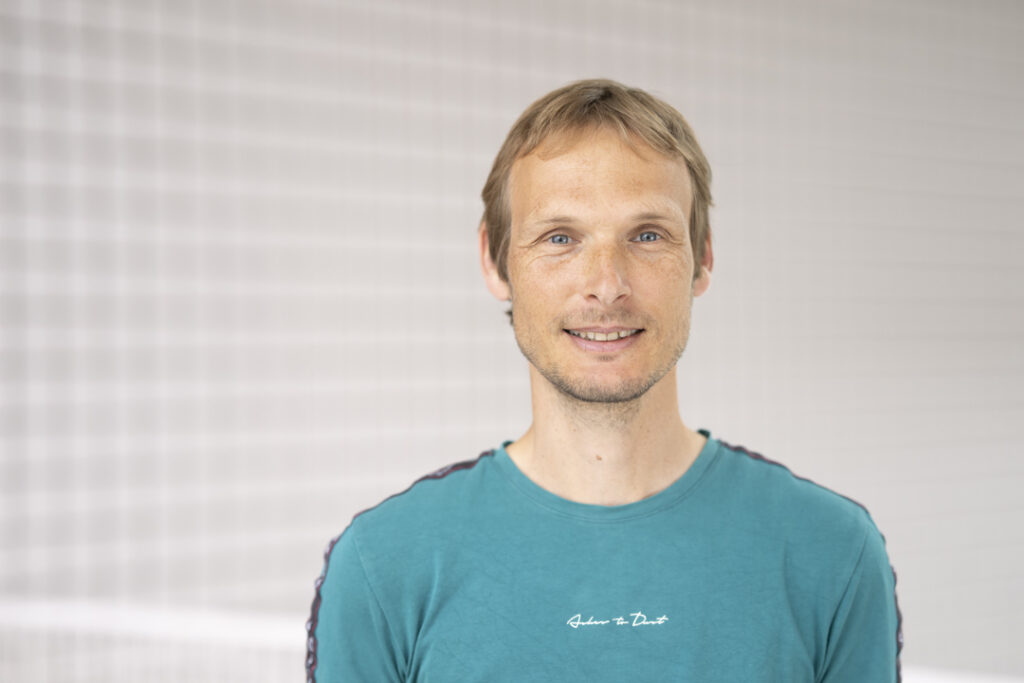

1. Who are you and what do you do?
Welcome to my page. Let me introduce myself, I am Mark Daniels, head technician of the experimental cardiology lab in the UMC Utrecht. Next to managing our lab, I supervise students and help PhD students and Post-doc’s both on technical as well as theoretical issues.
2. Problem to solution
I’m involved in a wide range of projects. It can be isolation of individual cells from carotid plaques, isolation of microRNA from Extracellular vesicles, generate and investigate auto-antibody binding to cardiomyocytes or find cell free DNA biomarkers for cardiovascular disease.
3. My tasks in the group
One part of my work is maintaining a smooth operating lab. This involves ordering, maintenance/reparation of equipment and being contact person for our lab. The other part is the research side. My role in the projects mentioned above is advising the students how to set up their experiments, helping to operate equipment and have theoretical discussions about their projects.

1. Who are you and what do you do?
Welcome to my page. Let me introduce myself, I am Mark Daniels, head technician of the experimental cardiology lab in the UMC Utrecht. Next to managing our lab, I supervise students and help PhD students and Post-doc’s both on technical as well as theoretical issues.
2. Problem to solution
I’m involved in a wide range of projects. It can be isolation of individual cells from carotid plaques, isolation of microRNA from Extracellular vesicles, generate and investigate auto-antibody binding to cardiomyocytes or find cell free DNA biomarkers for cardiovascular disease.
3. My tasks in the group
One part of my work is maintaining a smooth operating lab. This involves ordering, maintenance/reparation of equipment and being contact person for our lab. The other part is the research side. My role in the projects mentioned above is advising the students how to set up their experiments, helping to operate equipment and have theoretical discussions about their projects.



1. Who are you and what do you do?
Hello everyone, I am Daniek Kapteijn, one of the research technicians in the group of Professor Hester den Ruijter. My work is mainly in the laboratory, where I process clinical samples and perform all kinds of cardiac and vascular experiments. With these experiments, I believe we can get a better understanding of cardiac and vascular diseases and how they develop differently between men and women. I believe my contribution helps develop research for better diagnosis and treatments for cardiovascular patients.

1. Who are you and what do you do?
Hello everyone, I am Daniek Kapteijn, one of the research technicians in the group of Professor Hester den Ruijter. My work is mainly in the laboratory, where I process clinical samples and perform all kinds of cardiac and vascular experiments. With these experiments, I believe we can get a better understanding of cardiac and vascular diseases and how they develop differently between men and women. I believe my contribution helps develop research for better diagnosis and treatments for cardiovascular patients.

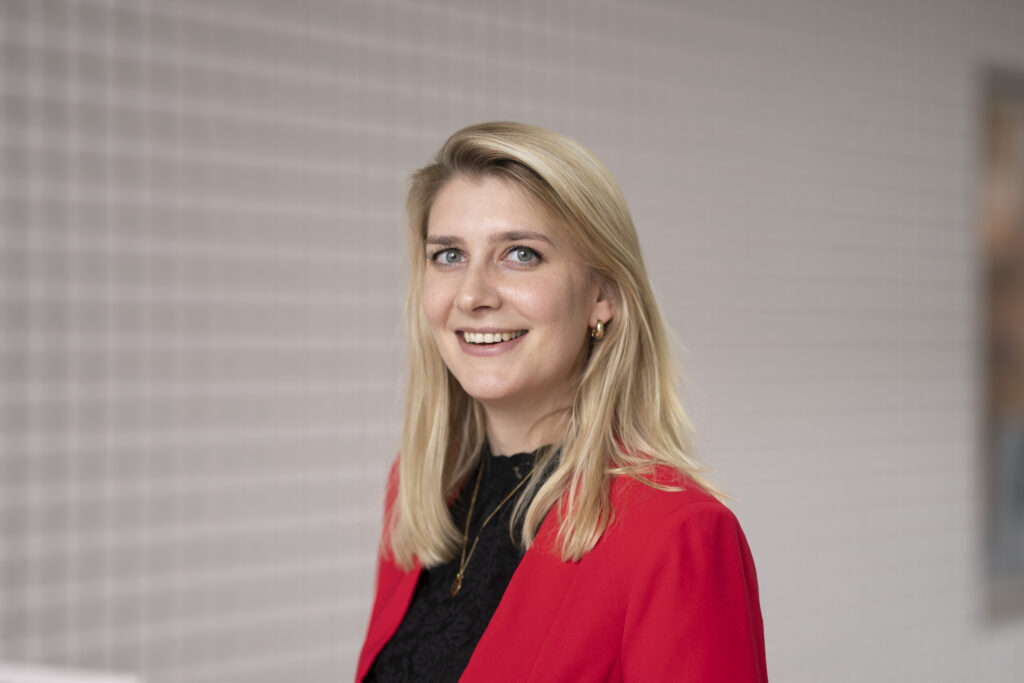

1. Who are you and what do you do?
Hi, welcome to my page. I am Diantha Schipaanboord, a PhD student. My aim is to improve the diagnosis of patients with angina without obstructive coronary artery disease.
2. Problem to solution
Many patients with chest pain complaints do not have obstructive coronary artery disease. Previously, this was thought to be favourable. However, in many of these patients symptoms persist. Recent evidence shows that coronary vascular dysfunction (coronary microvascular dysfunction and/or coronary vasospasm) remains undetected in these patients, who are mostly female. The presence of coronary vascular dysfunction is associated with an increased risk of adverse clinical events and impaired quality of life. Currently, an invasive coronary function test is recommended to diagnose coronary vascular dysfunction. This test, however, carries risks and its feasibility in large populations might be limited. My goal is to improve and move towards non-invasive diagnosis for patients with persistent angina and non-obstructive coronary artery disease.
3. My tasks in the group
Currently, I am working on the “UMCU-IMPRESS” pilot study. In this pilot study we aim to investigate the value of ECG measurement in patients suspected of coronary vascular dysfunction, and define the optimal lead placement. If we can find ECG patterns associated with coronary vascular dysfunction, the ECG of patients suspected of coronary vascular dysfunction can aid cardiologists to decide whom to refer for a coronary function test. I am also involved in the extension of an existing national registry, with the aim to investigate current care of patients that undergo an invasive coronary function test and to identify how many patients have coronary vascular dysfunction.

1. Who are you and what do you do?
Hi, welcome to my page. I am Diantha Schipaanboord, a PhD student. My aim is to improve the diagnosis of patients with angina without obstructive coronary artery disease.
2. Problem to solution
Many patients with chest pain complaints do not have obstructive coronary artery disease. Previously, this was thought to be favourable. However, in many of these patients symptoms persist. Recent evidence shows that coronary vascular dysfunction (coronary microvascular dysfunction and/or coronary vasospasm) remains undetected in these patients, who are mostly female. The presence of coronary vascular dysfunction is associated with an increased risk of adverse clinical events and impaired quality of life. Currently, an invasive coronary function test is recommended to diagnose coronary vascular dysfunction. This test, however, carries risks and its feasibility in large populations might be limited. My goal is to improve and move towards non-invasive diagnosis for patients with persistent angina and non-obstructive coronary artery disease.
3. My tasks in the group
Currently, I am working on the “UMCU-IMPRESS” pilot study. In this pilot study we aim to investigate the value of ECG measurement in patients suspected of coronary vascular dysfunction, and define the optimal lead placement. If we can find ECG patterns associated with coronary vascular dysfunction, the ECG of patients suspected of coronary vascular dysfunction can aid cardiologists to decide whom to refer for a coronary function test. I am also involved in the extension of an existing national registry, with the aim to investigate current care of patients that undergo an invasive coronary function test and to identify how many patients have coronary vascular dysfunction.



1. Who are you and what do you do?
I am Tim Sakkers, a PhD student focused on big data analysis. My goal is to explore the world of epigenetics and try to characterize an atherosclerotic plaque signature based on DNA methylation patterns.
2. Problem to solution
There is an urgent and unmet need for early, non-invasive diagnosis of atherosclerosis in females that can identify high-risk patients with potentially symptomatic plaques. Recent breakthroughs in the use of circulating fragments of cell-free DNA (cfDNA), have provided major advances in early cancer detection. Furthermore, it has been shown that, using deconvolution of tissue-specific methylation patterns, the contribution of different tissue origins to cfDNA can be quantified. We believe that we can use these methylation patterns to identify high-risk plaque signatures, which we can trace back in cfDNA and use as a prevention tool for atherosclerosis.
3. My tasks in the group
As part of the group I am in charge of data analysis of epigenetic datasets and the generation of primary cfDNA data for the detection of early biomarkers for atherosclerotic disease. I also supervise Master students in the group and teach in several courses at the University Utrecht.
4. Journal articles and other relevant output
Wesseling, M., Sakkers, T. R., De Jager, S. C. A., Pasterkamp, G., & Goumans, M. J. (2018). The morphological and molecular mechanisms of epithelial/endothelial-to-mesenchymal transition and its involvement in atherosclerosis. Vascular pharmacology, 106, 1-8.

1. Who are you and what do you do?
I am Tim Sakkers, a PhD student focused on big data analysis. My goal is to explore the world of epigenetics and try to characterize an atherosclerotic plaque signature based on DNA methylation patterns.
2. Problem to solution
There is an urgent and unmet need for early, non-invasive diagnosis of atherosclerosis in females that can identify high-risk patients with potentially symptomatic plaques. Recent breakthroughs in the use of circulating fragments of cell-free DNA (cfDNA), have provided major advances in early cancer detection. Furthermore, it has been shown that, using deconvolution of tissue-specific methylation patterns, the contribution of different tissue origins to cfDNA can be quantified. We believe that we can use these methylation patterns to identify high-risk plaque signatures, which we can trace back in cfDNA and use as a prevention tool for atherosclerosis.
3. My tasks in the group
As part of the group I am in charge of data analysis of epigenetic datasets and the generation of primary cfDNA data for the detection of early biomarkers for atherosclerotic disease. I also supervise Master students in the group and teach in several courses at the University Utrecht.
4. Journal articles and other relevant output
Wesseling, M., Sakkers, T. R., De Jager, S. C. A., Pasterkamp, G., & Goumans, M. J. (2018). The morphological and molecular mechanisms of epithelial/endothelial-to-mesenchymal transition and its involvement in atherosclerosis. Vascular pharmacology, 106, 1-8.



1. Who are you and what do you do?
Hi, welcome to my page. My name is Anique Dobbe and I am a PhD student at the general practice department of the UMC Utrecht in the group of professor Frans Rutten. Currently I combine my PhD with the postgraduate master of Epidemiology and the General Practitioner vocational training in Utrecht. The focus of my research is acute cardiovascular diseases in patients calling the out-of-hours services in primary care, with special focus on potential sex differences.
2. Problem to solution
In my research I focus on sex-differences in patients calling the out-of-hours service in primary care (OHS-PC) with chest discomfort. At the OHS-PC, decisions on the following trajectory are based on telephone triage by nurses under supervision of GPs. It is challenging to optimally triage those who could have an ACS based on history taking only, while balancing between safety and efficiency. Previous research has already shown there is considerable overlap in symptoms between men and women calling with chest discomfort. In my research I want to further investigate the way patients present their symptoms and if this is different between men and women.
3. My tasks in the group
Currently, I am responsible for the data collection for our studies aimed at improving telephone triage at the OHS-PC. We assess all contacts at the OHS-PC concerning chest discomfort and/or shortness of breath. We re-listen telephone triage recordings to collect information about characteristics of patients and the conversation; on symptoms, medical history, urgency allocation, and whether a supervising GP was involved in the triage. We then combine this information with the final diagnosis retrieved from the GP’s electronic medical file, and cardiologists’ and ED discharge letters.

1. Who are you and what do you do?
Hi, welcome to my page. My name is Anique Dobbe and I am a PhD student at the general practice department of the UMC Utrecht in the group of professor Frans Rutten. Currently I combine my PhD with the postgraduate master of Epidemiology and the General Practitioner vocational training in Utrecht. The focus of my research is acute cardiovascular diseases in patients calling the out-of-hours services in primary care, with special focus on potential sex differences.
2. Problem to solution
In my research I focus on sex-differences in patients calling the out-of-hours service in primary care (OHS-PC) with chest discomfort. At the OHS-PC, decisions on the following trajectory are based on telephone triage by nurses under supervision of GPs. It is challenging to optimally triage those who could have an ACS based on history taking only, while balancing between safety and efficiency. Previous research has already shown there is considerable overlap in symptoms between men and women calling with chest discomfort. In my research I want to further investigate the way patients present their symptoms and if this is different between men and women.
3. My tasks in the group
Currently, I am responsible for the data collection for our studies aimed at improving telephone triage at the OHS-PC. We assess all contacts at the OHS-PC concerning chest discomfort and/or shortness of breath. We re-listen telephone triage recordings to collect information about characteristics of patients and the conversation; on symptoms, medical history, urgency allocation, and whether a supervising GP was involved in the triage. We then combine this information with the final diagnosis retrieved from the GP’s electronic medical file, and cardiologists’ and ED discharge letters.



1. Who are you and what do you do?
Welcome to my page. Let me introduce myself, I am Sophie de Ruiter, a PhD candidate focused on cardiovascular risk factors effects. My aim is to unravel observed sex differences in risk factor effects using genetic data and Mendelian Randomisation.
2. Problem to solution
Cardiovascular disease is the leading cause of death worldwide in both women and men and risk largely depends on modifiable risk factors. Several observational studies have found sex differences in the effects of certain risk factors, including hypertension and diabetes. In both sexes, these risk factors increase the risk of CVD, but the adverse effect seems to be stronger in women than in men. It remains unclear whether the observed sex differences are due to an inherent biological difference between women and men, or whether these observations are due to a sex-specific bias. Therefore, my goal is to estimate sex specific causal relationships between risk factors and cardiovascular diseases using genetic data. Ultimately, this could improve clinical practice and health policies by tailoring interventions based on personalized risk.
3. My tasks in the group
I work on data analyses using data from the UK Biobank and various GWAS resources to obtain causal estimates of risk factors on cardiovascular diseases in women and men. My other projects have a focus on urine metabolites as biomarkers for cardiovascular disease, plasma proteins as potential drug targets and sex differences in atherosclerotic plaque.


1. Who are you and what do you do?
Welcome to my page. Let me introduce myself, I am Sophie de Ruiter, a PhD candidate focused on cardiovascular risk factors effects. My aim is to unravel observed sex differences in risk factor effects using genetic data and Mendelian Randomisation.
2. Problem to solution
Cardiovascular disease is the leading cause of death worldwide in both women and men and risk largely depends on modifiable risk factors. Several observational studies have found sex differences in the effects of certain risk factors, including hypertension and diabetes. In both sexes, these risk factors increase the risk of CVD, but the adverse effect seems to be stronger in women than in men. It remains unclear whether the observed sex differences are due to an inherent biological difference between women and men, or whether these observations are due to a sex-specific bias. Therefore, my goal is to estimate sex specific causal relationships between risk factors and cardiovascular diseases using genetic data. Ultimately, this could improve clinical practice and health policies by tailoring interventions based on personalized risk.
3. My tasks in the group
I work on data analyses using data from the UK Biobank and various GWAS resources to obtain causal estimates of risk factors on cardiovascular diseases in women and men. My other projects have a focus on urine metabolites as biomarkers for cardiovascular disease, plasma proteins as potential drug targets and sex differences in atherosclerotic plaque.




1. Who are you and what do you do?
I am Eloi Robin Mili, a junior researcher from Switzerland affiliated with Professor Hester den Ruijter's group. My primary research focus revolves around investigating sex differences in atherosclerosis.
2. Problem to solution
In the scope of my research, I focus on understanding the underlying sex differences in atherosclerosis. Specifically, my work delves into the realms of endothelial cells and epigenetic aging. Concerning the former, I isolate endothelial cells from the diseased arteries of patients, utilizing them as a model for studying atherosclerosis. The objective is to identify the factors driving disease progression in women. Regarding the latter, epigenetic aging is now recognized as a strong predictor of health. My research aims to explore its mechanisms and its relationship with cardiovascular outcomes. I aspire to pave the way for the discovery of new therapeutic approaches and the development of more effective prevention strategies through my research.
3. My tasks in the group
Within the group, my responsibilities include isolating patient cells. Additionally, I actively participate in generating and analyzing multi-omics data, thereby contributing to our investigation of sex differences in atherosclerosis.
4. Journal articles and other relevant output
Here is a previously published method for isolating patient cells from our group: https://www.ahajournals.org/doi/10.1161/JAHA.123.030243

1. Who are you and what do you do?
I am Eloi Robin Mili, a junior researcher from Switzerland affiliated with Professor Hester den Ruijter's group. My primary research focus revolves around investigating sex differences in atherosclerosis.
2. Problem to solution
In the scope of my research, I focus on understanding the underlying sex differences in atherosclerosis. Specifically, my work delves into the realms of endothelial cells and epigenetic aging. Concerning the former, I isolate endothelial cells from the diseased arteries of patients, utilizing them as a model for studying atherosclerosis. The objective is to identify the factors driving disease progression in women. Regarding the latter, epigenetic aging is now recognized as a strong predictor of health. My research aims to explore its mechanisms and its relationship with cardiovascular outcomes. I aspire to pave the way for the discovery of new therapeutic approaches and the development of more effective prevention strategies through my research.
3. My tasks in the group
Within the group, my responsibilities include isolating patient cells. Additionally, I actively participate in generating and analyzing multi-omics data, thereby contributing to our investigation of sex differences in atherosclerosis.
4. Journal articles and other relevant output
Here is a previously published method for isolating patient cells from our group: https://www.ahajournals.org/doi/10.1161/JAHA.123.030243



1. Who are you and what do you do?
Hi, welcome to my page! Let me introduce myself. My name is Elize de Jong and I work as a PhD stu-dent at the Department of Experimental Cardiology in the group of professor Hester den Ruijter. The focus of my research is exploring the disease mechanisms in patients with angina and non-obstruc-tive coronary artery disease (ANOCA), who are mostly female.
2. Problem to solution
Angina pectoris, or chest pain, is often thought to be caused by an obstruction in one or more coronary arteries that limits blood flow to the heart muscle. However, in around 50% of patients that are referred with chest pain, no significant obstructions are found. Causes of chest pain in these patients with ANOCA include different types of coronary vascular dysfunction (such as coronary vasospasm and/or coronary microvascular dysfunction), which is the inability of the vessels to regulate coronary blood flow properly. The disease mechanisms underlying coronary vascular dysfunction are largely unknown and therefore, evidence-based treatments are lacking. My aim is to unravel disease mechanisms in patients with different types of coronary vasomotor dysfunction and hopefully use this knowledge to diagnose the disease more easily and to identify new therapeutic targets.
3. My tasks in the group
Within our group, I try to establish the link between the cardiology clinic and the lab. For example, I use the blood samples from ANOCA patients undergoing an invasive coronary function test that have been collected and stored in the biobank as part of the “UMCU-IMPRESS-pilot” study. In the lab, we study these samples and try to gain insights into the disease mechanisms in these patients. In this way, I contribute to translational research. It would be great to eventually translate the results from the lab into results that can benefit clinical practice!
4. Journal articles and other relevant output
Coming soon!

1. Who are you and what do you do?
Hi, welcome to my page! Let me introduce myself. My name is Elize de Jong and I work as a PhD stu-dent at the Department of Experimental Cardiology in the group of professor Hester den Ruijter. The focus of my research is exploring the disease mechanisms in patients with angina and non-obstruc-tive coronary artery disease (ANOCA), who are mostly female.
2. Problem to solution
Angina pectoris, or chest pain, is often thought to be caused by an obstruction in one or more coronary arteries that limits blood flow to the heart muscle. However, in around 50% of patients that are referred with chest pain, no significant obstructions are found. Causes of chest pain in these patients with ANOCA include different types of coronary vascular dysfunction (such as coronary vasospasm and/or coronary microvascular dysfunction), which is the inability of the vessels to regulate coronary blood flow properly. The disease mechanisms underlying coronary vascular dysfunction are largely unknown and therefore, evidence-based treatments are lacking. My aim is to unravel disease mechanisms in patients with different types of coronary vasomotor dysfunction and hopefully use this knowledge to diagnose the disease more easily and to identify new therapeutic targets.
3. My tasks in the group
Within our group, I try to establish the link between the cardiology clinic and the lab. For example, I use the blood samples from ANOCA patients undergoing an invasive coronary function test that have been collected and stored in the biobank as part of the “UMCU-IMPRESS-pilot” study. In the lab, we study these samples and try to gain insights into the disease mechanisms in these patients. In this way, I contribute to translational research. It would be great to eventually translate the results from the lab into results that can benefit clinical practice!
4. Journal articles and other relevant output
Coming soon!

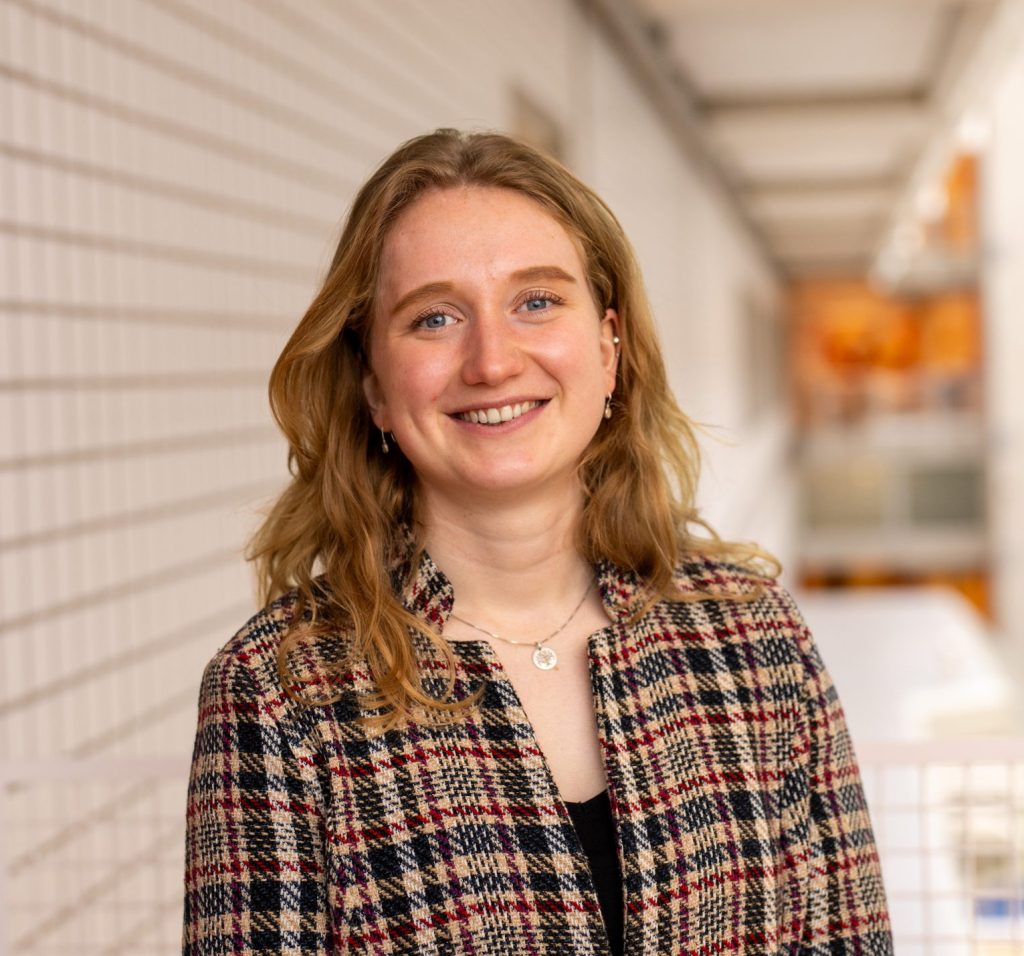

1. Who are you and what do you do?
My name is Anna Spiering, I am a PhD candidate in the group of professor Hester den Ruijter. My research is dedicated to unraveling differences between men and women in atherosclerosis.
2. Problem to solution
I use a combination of bioinformatics and lab-based approaches to study genes on the X and Y chromosome, and how they might explain sex differences in atherosclerosis. I am also interested in the protective role of estrogen in women, which appears to shield them from atherosclerosis and cardiovascular events until the menopause.
3. My tasks in the group
Together with my colleagues Eloi and Daniek, I isolate primary cells from atherosclerotic plaques collected in the AtheroExpress biobank. We can then use these cells in the lab as a model to explore and test hypotheses about atherosclerosis.
4. Journal articles and other relevant output
Coming soon!

1. Who are you and what do you do?
My name is Anna Spiering, I am a PhD candidate in the group of professor Hester den Ruijter. My research is dedicated to unraveling differences between men and women in atherosclerosis.
2. Problem to solution
I use a combination of bioinformatics and lab-based approaches to study genes on the X and Y chromosome, and how they might explain sex differences in atherosclerosis. I am also interested in the protective role of estrogen in women, which appears to shield them from atherosclerosis and cardiovascular events until the menopause.
3. My tasks in the group
Together with my colleagues Eloi and Daniek, I isolate primary cells from atherosclerotic plaques collected in the AtheroExpress biobank. We can then use these cells in the lab as a model to explore and test hypotheses about atherosclerosis.
4. Journal articles and other relevant output
Coming soon!

1. Who are you and what do you do?
Thank you for visiting this page. I am Kaiyong Qu from China and I am a PhD candidate in the group of professor Hester den Ruijter. My research is primarily focused on heart failure with preserved ejection fraction, a condition more prevalent in women than in men.
2. Problem to solution
In my research, I explore the distinctions between the sexes in various heart failure phenotypes to understand the underlying reasons for these differences. Presently, my work revolves around proteomics-based organ age, a factor that can significantly influence age-related diseases like heart failure.
3. My tasks in the group
I am responsible for the HELPFul cohort study with Somalogic proteomics. I am involved in data analysis. My task is to elucidate the patterns of organ aging over time and their connections with the development of heart failure, as well as the sex-differences in this process. Then we can identify individuals at elevated risk of heart failure and formulate more effective preventive strategies.
4. Journal articles and other relevant output
For further details on the HELPFul study, please refer to the following link: https://www.ncbi.nlm.nih.gov/pubmed/31171553

1. Who are you and what do you do?
Thank you for visiting this page. I am Kaiyong Qu from China and I am a PhD candidate in the group of professor Hester den Ruijter. My research is primarily focused on heart failure with preserved ejection fraction, a condition more prevalent in women than in men.
2. Problem to solution
In my research, I explore the distinctions between the sexes in various heart failure phenotypes to understand the underlying reasons for these differences. Presently, my work revolves around proteomics-based organ age, a factor that can significantly influence age-related diseases like heart failure.
3. My tasks in the group
I am responsible for the HELPFul cohort study with Somalogic proteomics. I am involved in data analysis. My task is to elucidate the patterns of organ aging over time and their connections with the development of heart failure, as well as the sex-differences in this process. Then we can identify individuals at elevated risk of heart failure and formulate more effective preventive strategies.
4. Journal articles and other relevant output
For further details on the HELPFul study, please refer to the following link: https://www.ncbi.nlm.nih.gov/pubmed/31171553



1. Who are you and what do you do?
Welcome! My name is Tian Lan and I am a PhD candidate in the group of professor Hester den Ruijter. My research harnesses the power of computational biology to stratify patients with advanced atherosclerosis, aiming to improve how we approach individual patient management.
2. Problem to solution
Atherosclerosis contributes significantly to the world's mortality rate. Our work within the Athero-Express Biobank has shed light on the distinct transcriptomic signals that diversify carotid atherosclerosis manifestation among individuals. My current research is centered on unraveling the intricate gene expression profiles linked to advanced atherosclerotic symptoms. I will put some efforts on identify the correlations between sex-specific and transcriptomic-signature-specific forms of atherosclerosis and their manifestations in CTA imaging markers. This vital work stands to enhance precision medicine, offering targeted interventions that are attuned to the genetic and phenotypic variances of each patient.
3. My tasks in the group
I am involved in the analysis of biological datasets, uncovering the molecular intricacies that define atherosclerosis.
4. Journal articles and other relevant output
Coming Soon!

1. Who are you and what do you do?
Welcome! My name is Tian Lan and I am a PhD candidate in the group of professor Hester den Ruijter. My research harnesses the power of computational biology to stratify patients with advanced atherosclerosis, aiming to improve how we approach individual patient management.
2. Problem to solution
Atherosclerosis contributes significantly to the world's mortality rate. Our work within the Athero-Express Biobank has shed light on the distinct transcriptomic signals that diversify carotid atherosclerosis manifestation among individuals. My current research is centered on unraveling the intricate gene expression profiles linked to advanced atherosclerotic symptoms. I will put some efforts on identify the correlations between sex-specific and transcriptomic-signature-specific forms of atherosclerosis and their manifestations in CTA imaging markers. This vital work stands to enhance precision medicine, offering targeted interventions that are attuned to the genetic and phenotypic variances of each patient.
3. My tasks in the group
I am involved in the analysis of biological datasets, uncovering the molecular intricacies that define atherosclerosis.
4. Journal articles and other relevant output
Coming Soon!

© 2022 UMCresearchgroup.com | Webdesign & development by Dunico